Observations of Genus Liriodendron
fayremead
7 years ago
last modified: 7 years ago
Featured Answer
Sort by:Oldest
Comments (11)
Toronado3800 Zone 6 St Louis
7 years agoRelated Discussions
Ficus Trees in Containers
Comments (169)Insofar as how it would impact root health, there is no difference between plastic and high-fired clay/ceramic. If you can see no crazing (myriad small cracks reminiscent of a fish net with small holes) in the glaze, you can eliminate anything toxic making its way from the pot to the grow medium. If you haven't fertilized or used any type of tonics, insecticides, leaf shine, detergents, etc., it's a very good bet you have unwittingly over-watered due to the fact there is no way for water to evaporate or be used by the plant as the new medium is not colonized by roots and remains a hostile environment to roots due to lack of oxygen. My suggestion would be to lift the plant from the pot to see it the lower reaches of the soil column are saturated. If so, see figure D below. Remove the soil from the new pot, place an over-turned pot in the bottom of the pot so it fits snugly, and cover the drain hole of the over-turned pot with something that won't rot (it does not need to allow water to drain through the hole in the over-turned pot, but it's ok to use a screen if you wish). Mix enough of the soil that falls away from the roots or remains in the large pot with an equal measure of perlite and fill to the top of the over-turned pot, then reposition your plant on top of the pot. and back-fill with the remaining soil w/o the extra perlite. The shaded areas in the images above represents perched water. By comparing D to A, you can see the over-turned pot significantly reduces the amount of excess (perched) water your soil will b e able to hold, so air will return the the soil much faster. The operational words for the moisture level of a grow medium is damp/moist, never wet/soggy. After having put the pot to work as ballast, start checking moisture levels with a "tell" you can make from a wooden dowel rod. It is far superior to a finger or a "moisture meter". More about using a 'tell': Using a 'tell' Over-watering saps vitality and is one of the most common plant assassins, so learning to avoid it is worth the small effort. Plants make and store their own energy source – photosynthate - (sugar/glucose). Functioning roots need energy to drive their metabolic processes, and in order to get it, they use oxygen to burn (oxidize) their food. From this, we can see that terrestrial plants need plenty of air (oxygen) in the soil to drive root function. Many off-the-shelf soils hold too much water and not enough air to support the kind of root health most growers would like to see; and, a healthy root system is a prerequisite to a healthy plant. Watering in small sips leads to avoid over-watering leads to a residual build-up of dissolved solids (salts) in the soil from tapwater and fertilizer solutions, which limits a plant's ability to absorb water – so watering in sips simply moves us to the other horn of a dilemma. It creates another problem that requires resolution. Better, would be to simply adopt a soil that drains well enough to allow watering to beyond the saturation point, so we're flushing the soil of accumulating dissolved solids whenever we water; this, w/o the plant being forced to pay a tax in the form of reduced vitality, due to prolong periods of soil saturation. Sometimes, though, that's not a course we can immediately steer, which makes controlling how often we water a very important factor. In many cases, we can judge whether or not a planting needs watering by hefting the pot. This is especially true if the pot is made from light material, like plastic, but doesn't work (as) well when the pot is made from heavier material, like clay, or when the size/weight of the pot precludes grabbing it with one hand to judge its weight and gauge the need for water. Fingers stuck an inch or two into the soil work ok for shallow pots, but not for deep pots. Deep pots might have 3 or more inches of soil that feels totally dry, while the lower several inches of the soil is 100% saturated. Obviously, the lack of oxygen in the root zone situation can wreak havoc with root health and cause the loss of a very notable measure of your plant's potential. Inexpensive watering meters don't even measure moisture levels, they measure electrical conductivity. Clean the tip and insert it into a cup of distilled water and witness the fact it reads 'DRY'. One of the most reliable methods of checking a planting's need for water is using a 'tell'. You can use a bamboo skewer in a pinch, but a wooden dowel rod of about 5/16” (75-85mm) would work better. They usually come 48” (120cm) long and can usually be cut in half and serve as a pair. Sharpen all 4 ends in a pencil sharpener and slightly blunt the tip so it's about the diameter of the head on a straight pin. Push the wooden tell deep into the soil. Don't worry, it won't harm the root system. If the plant is quite root-bound, you might need to try several places until you find one where you can push it all the way to the pot's bottom. Leave it a few seconds, then withdraw it and inspect the tip for moisture. For most plantings, withhold water until the tell comes out dry or nearly so. If you see signs of wilting, adjust the interval between waterings so drought stress isn't a recurring issue. Questions? Al...See MoreNew genus of CP FOUND!!!
Comments (15)uhmm if you read it.... the last part of the second post says "So to insure that, there will be a $350 fee for each plant. Since Barry is out of town he asked me to take the orders. We don't know how many plants are on the way, so they will be distributed first come first serve. If you are interested send me an email at voodoodancer@gmail.com. Your name will be put on the list. The plants will be sent out as soon as Barry receives your money and your check clears. " Cheers......See Moreits time for fall observations
Comments (22)I don't really see any real decline in any of mine other than nematodes previously discussed. What I do see are a few individual hostas that I really have to do something about slug-wise. My Maui Buttercups looks like its been peppered with a shotgun blast, for instance. I've been spraying with the ammonia solution all season but I must not get up early enough - I only saw a total of five all season. Time to get some slug bait! All in all, I am extremely pleased with my hostas this year! EO, that's a very interesting experiment you have there. You didn't explain how you store them for the winter. Looks like lots of water in the bottom third of the bucket which appears to be fine during the growing season. But you must at least have to tip it on its side in winter so they don't freeze, I would think. And then, I bet, cover with your leaf piles you speak so often of? Please tell us more. Char...See MoreWhat host plants are grown to feed caterpillars?
Comments (0)The numbered plants are those that somebody on the Butterfly Gardening forum has used to SUCCESSFULLY rear caterpillars to adulthood or has actually observed the caterpillar eating. If there is no numbered plant, then nobody on our forum can vouch for any specific plant. If a butterfly in the list below has no numbered plant, research the plant family shown for hostplant candidates. Several forum members report that using nursery or home-improvement store plants can be poisonous to caterpillars and adult butterflies due to pesticides or other chemicals. You have three main options: 1--raise the plant from seed (best). 2--prune the plant, do not put it in a prominent location, and wait for some new growth before presenting the plant to butterflies (good). 3--buy nursery/store plants, wash them thoroughly (fair; it is hard to get all the chemical off of the plant). SWALLOWTAILS Giant Swallowtail - Citrus family, Rutaceae 1. Ptelea trifoliata - hop tree, wafer ash 2. Zanthoxylum clava-herculis - hercules club 3. Zanthoxylum fagara - wild lime 4. Zanthoxylum americanum - prickly ash 5. Citrus spp. - various species, including cultivated 6. Murraya paniculata - orange jasmine 7. Ruta graveolens - rue 8. Dictamnus albus - gas plant Spicebush Swallowtail - Laurel family, lauraceae 1. Persea borbonia - redbay 2. Persea palustris - swampbay 3. Sassafras albidum - sassafras 4. Lindera benzoin - spicebush 5. Cinnamomum camphora - camphor tree Pipevine swallowtail caterpillars will die if raised on tropical pipevines. Please only use the pipevines on the list. Pipevine Swallowtail - Pipevine family, Aristolochia 1. Aristolochia macrophylla - big leaf pipevine 2. Aristolochia tomentosa - woolly pipevine 3. Aristolochia serpentaria - Virginia snakeroot 4. Aristolochia californica - California pipevine 5. Aristolochia fimbriata - white-veined Duchman's pipe 6. Aristolochia trilobata - Dutchman's Pipe 7. Aristolochia clematitis - Birthwort 8. Aristolochia watsonii - Desert pipevine Anise Swallowtail - Carrot family, Apiaceae 1. Pimpinella anisum - anise 2. Foeniculum vulgare - fennel 3. Lomatium - parsnip Eastern Black Swallowtail - Rue family, Rutaceae - Carrot family, Apiaceae 1. Ruta graveolens - rue 2. Anethum graveolens - dill 3. Foeniculum vulgare - fennel 4. Petroselinum crispum - parsley 5. Zizia aurea - golden Alexander Palamedes Swallowtail - Laurel family, lauraceae 1. Persea borbonia - redbay 2. Persea palustris - swampbay 3. Sassafras albidum - sassafras Zebra Swallowtail - Pawpaw family, annonaceae 1. Asimina triloba - common pawpaw 2. Asimina pygmaea - dwarf pawpaw 3. Annona muricata - soursop Polydamas Swallowtail - Pipevine family, Aristolochia 1. Aristolochia elegans - calico flower 2. Aristolochia gigantea - giant pipevine 3. Aristolochia fimbriata - white-veined Duchman's pipe Eastern Tiger Swallowtail - Rose family, Rosaceae - Magnolia family, Magnoliaceae - Olive family, Oleaceae 1. Prunus serotina - wild black cherry 2. Liriodendron tulipifera - tulip poplar 3. Ptelea trifoliata - wafer ash, hoptree 4. Fraxinus velutina - Arizona ash tree 5. Magnolia virginiana - sweetbay magnolia Canadian Swallowtail 1. Populus tremuloides - quaking aspen Two-tailed Tiger Swallowtail - Cherry family, Prunus - Ash family, Fraxinus - Citrus family, Ptelea 1. Prunus virginiana - chokecherry 2. Ptelea crenulata - California hoptree 3. Ptelea trifoliata - Common hoptree Pale Swallowtail - Buckthorn family, Rhamnaceae 1. Rhamnus californicus - coffeeberry 2. Ceanothus arboreus - California lilac Western Tiger Swallowtail - Willow family, Salicaceae WHITES and SULPHURS Sulphurs - Bean family, fabaceae Cloudless Sulphur 1. Cassia alata - Candlestick plant 2. Senna hebecarpa - wild senna Clouded (Common) Sulphur 1. White or red clover 2. Baptisia australis - wild indigo Orange-barred Sulphur Sleepy Orange 1. Cassia obtusifolia - sicklepod 2. Cassia bicapsularis - Christmas senna 3. Cassia surattensis - glaucous cassia 4. Senna mexicana - Bahama senna 5. Senna ligustrina - privet senna 6. Cassia javanica - apple blossom cassia, pink cassia 7. Chamaechrysta fasciculata - partridge pea 8. Senna alata - Candlestick cassia, candlebush Cabbage White - Mustard family, brassicaceae 1. The garden vegetable cabbage 2. Tropaeolum spp. - nasturtium California Dogface - Bean family, fabaceae 1. Amorpha californica - false indigo Dainty Sulphur - Aster family, asteraceae 1. Bidens spp. - Spanish needles Great Southern White - Mustard family, brassicaceae - Nasturtium family, tropaeolaceae - Saltwort family, bataceae Common White - Mustard family, brassicaceae Sara orangetip - Mustard family , brassicaceae Orange (Alfalfa) Sulphur - Bean family, fabaceae GOSSAMERS (blues, coppers, hairstreaks, Harvester) Gray Hairstreak - Mallow family, malvaceae 1. Sida spp. - broomweed 2. Hibiscus moscheutos - swamp rose mallow 3. Hibiscus coccineus - swamp hibiscus/Texas star 4. Desmodium genus - beggarweed 5. Trifolium repens - white clover 6. Medicago sativa - alfalfa Juniper Hairstreak 1. Juniperus virginiana - eastern redcedar Cassius Blue - Leadwort family, plumbaginaceae 1. Plumbago auriculata - leadwort 2. Plumbago scandens - wild plumbago Echo Blue (aka Spring Azure or Summer Azure) - Buckthorn family, rhamnaceae 1. Ceanothus spp. - California buckeye, California lilac Achmon Blue - Wild buckwheat family, polygonaceae 1. Eriogonum spp. - buckwheat Eastern Tailed Blue - clovers 1. Securigera (Coronilla) varia - crown vetch Atala - Zamia family, zamiaceae Great Purple (or Blue) Hairstreak - Mistletoe family, loranthaceae Harvester - In America, our only carnivorous butterfly. They feed on woolly aphids of the genera schizoneura and pemphigus. BRUSH-FOOTS (admirals, fritillaries, crescentspots, checkerspots, anglewings, ladies, tortoiseshells, leafwings, patches) Buckeye - Snapdragon family, scrophulariaceae - Plantain family, plantaginaceae - Vervain family, verbenaceae 1. Agalinis fasciculata - wild foxglove 2. Dyschoriste spp. - twinflower 3. Ruellia caroliniana - wild petunia 4. Ruellia succulenta - thickleaf wild petunia 5. Verbena hastata - blue vervain 6. Orthocarpus spp. - owl's clover 7. Plantago lanceolata - English plantain/ribgrass 8. Mimulus - monkey flower 9. Linaria vulgaris - butter & eggs 10. Linaria canadensis - blue toadflax 11. Linaria purpurea - purple toadflax 12. Galvezia speciosa - Island bush snapdragon 13. Diascia spp. - twinspur 14. Plantago major - greater or common plantain Most red-flowered and a few blue flowered passifloras will not support the butterflies that use these vines in the United States. Many red-flowered tropical passionvines are on the market. Please do not use them - they are similar enough to our own passionvines that our female butterflies will lay eggs on them, but the caterpillars will soon die. Gulf Fritillary - Passionvine family, passifloraceae 1. Passiflora incarnata - maypop 2. Passiflora suberosa - corky stemmed passionvine 3. Passiflora lutea - yellow passionflower 4. Passiflora alto - 'Amethyst'/'Lavender Lady'/'Star of Mikan' 5. Passiflora caerulea - blue passionflower/'Waterloo Blue' 6. Passiflora incarnata x cinnicata - incense passionflower 7. Passiflora vitifolia x caerulea - passionflower 'Lady Margaret' 8. Passiflora biflora - twin flower passionflower Zebra Longwing - Passionvine family, passifloraceae 1. Passiflora suberosa - corky stemmed passionvine 2. Passiflora biflora - two-flower passionvine 3. Passiflora lutea - yellow passionvine 4. Passiflora incarnata - purple passionflower or Maypops Ruddy Daggerwing - Fig family, moraceae 1. Ficus aurea - Florida strangler fig 2. Ficus citrifolia - wild banyan 3. Ficus benjamina - weeping fig 4. Ficus macrocarpa - Australian banyan Julia - Passionvine family, passifloraceae 1. Passiflora suberosa - corky stemmed passionvine 2. Passiflora lutea - yellow passionflower 3. Passiflora incarnata - maypop Painted Lady - Aster family, asteraceae 1. Borage 2. Sunflower 3. Malva sylvestris - High mallow 4. Malva parviflora - cheeseweed 5. Lavatera maritima - tree mallow 6. Thistles American Painted Lady - Aster family, asteraceae 1. Gnaphalium obtusifolium - cudweed, sweet everlasting 2. Gnaphalium falcatum - cudweed 3. Helichrysum petiolatum - licorice plant 4. Helichrysum thianschanicum - licorice icicles 5. Anaphalis margaritacea - pearly everlasting 6. Antennaria plantaginifolia - plantain-leaved pussy toes 7. Artemesia ludoviciana - Prairie Sage West Coast Lady - Mallow family, malvaceae 1. Lavatera maritima - tree mallow 2. Althea rosea - common hollyhock 3. Malva neglecta - common mallow Red-spotted Purple - Rose family, rosaceae - Willow family,salicaceae - Poplar family, populus 1. Salix nigra - black willow 2. Salix caroliniana - Carolina willow 3. Prunus serotina - wild black cherry 4. Prunus cerasifera - purple leaf plum 5. Malus angustifolia - Southern or wild crabapple 6. "hybrid crabapple" Variegated Fritillary - Passionvine family, passifloraceae - Violet family, viola 1. Passiflora incarnata - maypop 2. Viola floridana - common violet 3. Viola soraria - woolly blue violet 4. Viola tricolor - Johnny Jump-ups 5. Viola x Wittrockiana - pansies White Peacock - Snapdragon family, scrophulariaceae - Vervain family, verbenaceae 1. Bacopa caroliniana - water hyssop, lemon bacopa 2. Bacopa monnieri - water hyssop, herb of grace Viceroy - Willow family, salicaceae - Poplar family, populus 1. Salix nigra - black willow 2. Salix caroliniana - Carolina willow 3. Salix caprea - goat willow Phaon Crescentspot - Vervain family, verbenaceae 1. Phyla nodiflora - fogfruit Silvery Checkerspot 1. Echinacea purpurea - purple coneflower 2. Echinacea tennesseensis - Tennessee coneflower 3. Echinacea pallida - pale coneflower 4. Rudbeckia hirta - black-eyed susan 5. Liatris spicata - blazing star/gayfeather Baltimore Checkerspot 1. Plantago lanceolata - English or narrow-leaved plantain 2. Chelone glabra - white turtlehead 3. Chelone lyonii - turtlehead "hot lips" Question Mark - Nettle family, urticaceae - Elm family, ulmus 1. Humulus lupus - hops vine California Tortoiseshell - Buckthorn family, rhamnaceae 1. Ceanothus spp. Red Admiral - Nettle family, urticaceae 1. Urtica spp. - stinging nettle Goatweed Leafwing - Croton family, euphorbiaceae 1. Croton capitatum - goatweed Hackberry Emperor - Elm family, ulmaceae - Hackberry family, celtis 1. Celtis spp. - hackberry, sugarberry Great spangled Fritilary - Violet family, viola Mourning Cloak - Willow family, salicaceae - Cottonwood family, populus - Elm family, ulmus 1. Salix matsudana - corkscrew willow White Admiral - Birch family, betula - Willow family, salicaceae - Poplar family, populus 1. Prunus serotina - wild black cherry Lorquin's Admiral - Willow family, salicaceae California Sister - Oak family, quercus Malachite - Acanthus family, acanthaceae Bordered Patch - Asteraceae - sunflower family 1. Wedelia hispida - Zexmenia 2. Verbesina encelioides - Golden Crownbeard MILKWEED BUTTERFLIES Monarch - Milkweed family, asclepiadaceae 1. Asclepias currasavica - tropical/scarlet milkweed 2. Asclepias incarnata - swamp milkweed 3. Cynanchum laeve - honeyvine 4. Asclepias fascicularis - narrow-leaf milkweed 5. Asclepias speciosa - showy milkweed 6. Asclepias physocarpa - Balloon or Swan plant 7. Calotropis gigantea - giant milkweek or crown flower Queen - Milkweed family, asclepiadaceae 1. Sarcostemma clausa - whitevine 2. Asclepias currasavica - tropical/scarlet milkweed SKIPPERS Brazilian Skipper - Canna family, cannaceae - Arrowroot family, marantaceae 1. Thalia dealbata - powdery thalia Fiery Skipper - Grass family, Poaceae 1. Bermuda grass - Cynodon dactylon Silver-spotted Skipper - Bean family, fabaceae 1. Amorpha fruticosa - desert false indigo 2. Robinia pseudoacacia - black locust Long-tailed Skipper - Bean family, fabaceae Hoary Edge Skipper - Bean family, fabaceae 1. Amorpha fruticosa - desert false indigo 0gt;...See Morewisconsitom
7 years agoedlincoln
7 years agofayremead
7 years agoedlincoln
7 years agolast modified: 7 years agokentrees12
7 years agofayremead
7 years agoEmbothrium
7 years agoarbordave (SE MI)
7 years agolast modified: 7 years agohairmetal4ever
7 years ago
Related Stories
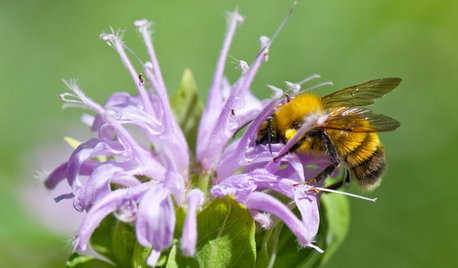
GARDENING GUIDESSupport Bumblebees by Providing Forage in 3 Seasons
Bumblebees are fascinating and fun to observe foraging in gardens. Find out how to create a buffet for these fuzzy, charismatic bees
Full Story
GARDENING GUIDESInvite Cellophane Bees to Your Garden by Providing Patches of Bare Soil
Look for cellophane bees (Colletes) pollinating flowering trees and shrubs in U.S. gardens this spring
Full Story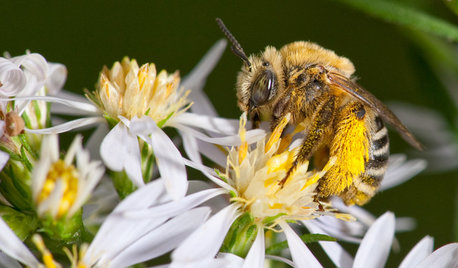
GARDENING GUIDESLook for Long-Horned Bees on Summer's Flowers
These insects are busy in the garden come summer and fall, pollinating sunflowers, coneflowers, asters and more
Full Story
GARDENING GUIDESInvite Mining Bees to Your Garden by Planting Their Favorite Plants
Look for mining bees (Andrena) pollinating woodland wildflowers in U.S. gardens this spring
Full Story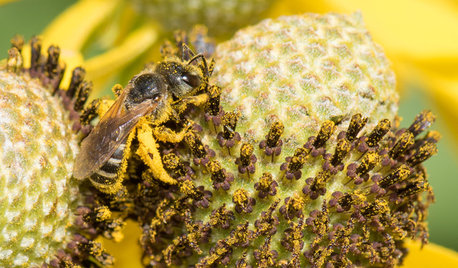
GARDENING GUIDESWelcome Sweat Bees to Your Garden Throughout the Growing Season
Look before you swat! These friendly sweat bees will feed on your sweat on a hot summer day, but their main buffet is flowers
Full Story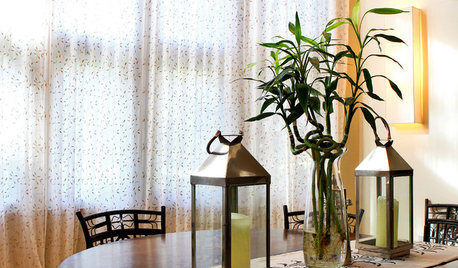
DECORATING GUIDESImprove Your Style Fortune With Lucky Bamboo
Serve this versatile plant straight up or with a twist for auspicious living decor that thrives without soil
Full Story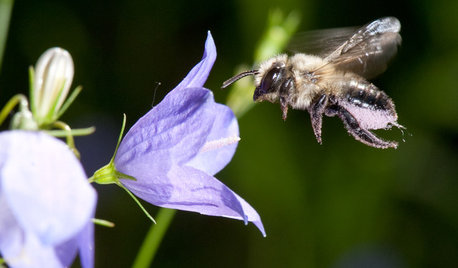
GARDENING GUIDESPut Out the Welcome Mat for Leafcutter Bees in Your Garden
Provide a diversity of flowering plants from spring through fall for these charismatic native bees, and you won’t be disappointed
Full Story
HOUSEPLANTS8 Essentials for Healthy Indoor Plants
Houseplants add so much to our homes — and can thrive when grown in the right conditions. Keep these tips in mind
Full Story
GARDENING GUIDES6 Plants That Beat Butterfly Bush for the Wildlife Draw
It's invasive, a nonnative and a poor insect magnet. Check out these better alternatives to butterfly bush in the garden
Full Story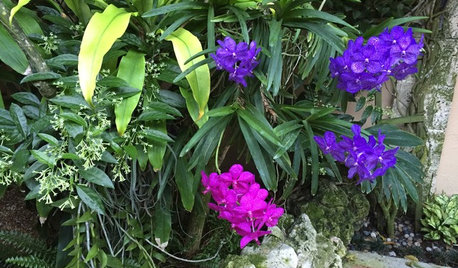
INSPIRING GARDENSThe Garden That Orchids Built
The owners of a famous orchid nursery create a sanctuary for themselves in South Florida
Full StorySponsored
Columbus Design-Build, Kitchen & Bath Remodeling, Historic Renovations





Smivies (Ontario - 5b)